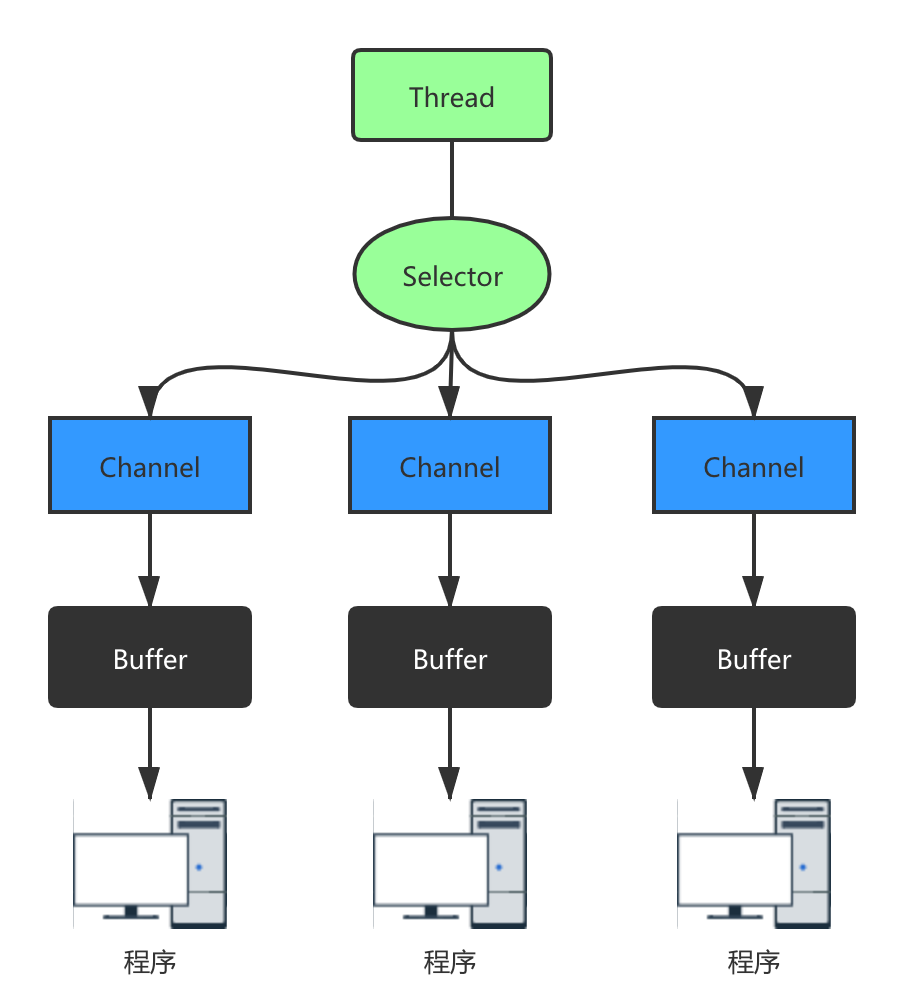NIO
概念
NIO
hsaRemaining()//表明当前缓冲区的位置和限制之间是否尚有元素.
Bio和NIO的比较
Bio用流的方式,Nio用块的方式,块I/O比流IO处理快
Bio是阻塞,Nio非阻塞
BIO是字节流和字符流,Nio是基于channel通道和buffer缓冲进行操作,数据总数通过
缓冲,从缓冲区进入通道,Selector用于监听通道的事件(连接请求,数据到达),因此单线程
就能监听多个通道
NIO 有三大核心部分: Channel(通道)、Buffer(缓冲区)、Selector(选择器)
NIO关系图

- 每个 Channel 都会对应一个 Buffer。
- Selector 对应一个线程,一个线程对应多个 Channel(连接)。
- 该图反应了有三个 Channel 注册到该 Selector //程序
- 程序切换到哪个 Channel 是由事件决定的,Event 就是一个重要的概念。
- Selector 会根据不同的事件,在各个通道上切换。
- Buffer 就是一个内存块,底层是有一个数组。
- 数据的读取写入是通过 Buffer,这个和 BIO,BIO 中要么是输入流,或者是输出流,不能双向,但是 NIO 的 Buffer 是可以读也可以写,需要 flip 方法切换 Channel 是双向的,可以返回底层操作系统的情况,比如 Linux,底层的操作系统通道就是双向的。
buffer
可读写的内存块
channel
本质上对应流对象,但是比流高级能够读写,通道可以实现异步读写数据
通道可以从缓冲读数据,也可以写数据到缓冲
文件拷贝
File file = new File("d://A.txt");
FileInputStream fileInputStream = new FileInputStream(file);
//文件拷贝
FileOutputStream fileOutputStream = new FileOutputStream("D://B.txt");
FileChannel channel = fileInputStream.getChannel();
//拷贝文件
FileChannel channel1 = fileOutputStream.getChannel();
//设置拷贝文件缓冲
//ByteBuffer allocate1 = ByteBuffer.allocate(512);
//文件读取
ByteBuffer allocate = ByteBuffer.allocate((int) file.length());
while(true){
allocate.clear();
int read = channel.read(allocate);
if(read==-1){break;}//表示结束
allocate.flip();
channel1.write(allocate);
}
// channel.read(allocate);
// System.out.println(new String(allocate.array()));
fileInputStream.close();
fileOutputStream.close();
//总的来说就是通道的值要来之于buffer,通过buffer中的flip()来获得channel中的值
Selector
用心做~


